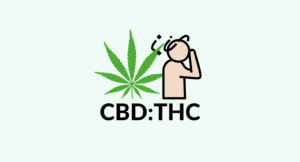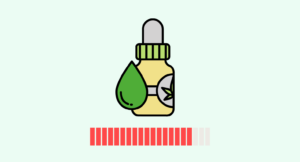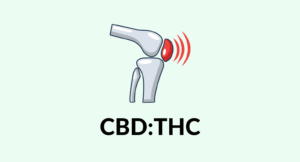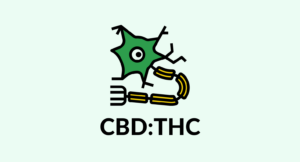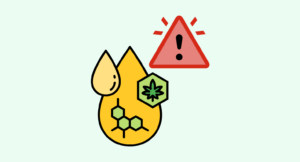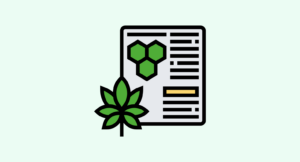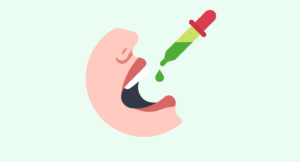
Where to Buy CBD in Cincinnati, OH?
Cincinnati laws are relatively relaxed towards cannabinoids. Virtually all cannabinoids are legal for recreational here with the exception of delta 9 THC (the main active ingredient in marijuana). Only those registered as a medical patient are legally allowed to use marijuana products within the state.
CBD, delta 8 THC, delta 10 THC, HHC, and others are entirely legal here as long as they’re derived from hemp.
Here, we’ll break down each of the rules and regulations put in place by the Ohio state lawmakers for each of the primary cannabinoids.
Is CBD Legal in Cincinnati?
Yes, CBD is legal in Cincinnati and throughout the state of Ohio.
CBD was legalized at the federal level across the United States when the 2018 Farm Bill went into effect. Ohio followed the footsteps set by national authorities by passing Senate Bill 57 in 2019, which establishes the necessary regulations to produce and sell CBD products.
However, you should know that the buckeye state makes a critical distinction regarding THC concentrations in a product.
If it has more than 0.3% THC, it will automatically be considered marijuana-derived and therefore illegal to sell and possess. If you make sure to stay below that limit, you won’t have any problems, as your product will be considered hemp-derived.
Top-Rated CBD Vendors That Deliver to Cincinnati
- Royal CBD — Best CBD Brand Overall
- Gold Bee — Best Organic CBD Oil
- Kiara Naturals — Runner-Up, Best Organic
- Industrial Hemp Farms — Best CBD Hemp Flower
- CBDistillery — Wide Product Range
Is Marijuana Legal In Cincinnati?
No, marijuana is illegal in Ohio except for medicinal users.
However, Cincinnati recently decriminalized marijuana possession back in 2019, although it’s still illegal to sell and smoke in public spaces.
Medical cases were legalized in 2016 when Ohio passed House Bill 523. This law created the Medical Marijuana Control Program, responsible for analyzing and dictating the necessary regulations for medical cannabis.
To get a medical marijuana card, you must be 18 or older (or have a legal guardian at least 21), be a resident of Ohio, and have a medical condition treatable with cannabis. If you meet these requirements, all that’s left is to visit a doctor qualified to prescribe medical cannabis and register with the Ohio Medical Marijuana Registry. Once you complete all of this, you just have to wait for your card to arrive in the mail.
These are some of the diseases treatable with marijuana approved by the MMCP:
- Alzheimer’s disease
- Amyotrophic lateral sclerosis (ALS)
- Cancer
- Crohn’s disease
- Epilepsy
- HIV/AIDS
- Chronic and severe pain
- Tourette syndrome
You can consult the rest of the diseases on the official MMCP website.
Don’t forget that medical cannabis cards have a cost. Ohio’s card can set you back $25 or $50, depending on your living conditions.
In conclusion, it’s not difficult to get a medical cannabis card to legally buy marihuana, although you must suffer from one of the listed diseases. Otherwise, remember that marijuana is decriminalized in Cincinnati, so you won’t be fined or penalized for possessing less than 100 grams.
How Much Does Weed Cost in Cincinnati?
Marijuana in Cincinnati averages $8.50 per gram, though a more premium quality bud can go up to around $10.
Is Delta 8 THC Legal in Cincinnati?
Yes, delta 8 THC is legal in Cincinnati and the rest of Ohio. It’s one of the many cannabinoids that state authorities permitted in the previously mentioned Senate Bill 57.
However, delta 8 products made from the marijuana plant are illegal in Ohio too.
Always make sure the products you buy come from a reputable source. For example, many people have complained that delta 8 products sold in non-specialized stores, such as gas stations, are unsafe and contain shady components.
There are also a lot of scam delta 8 companies operating online as well as in-store to watch out for.
Top Delta 8 THC Vendors That Deliver to Cincinnati

List of Dispensaries in Cincinnati
Sunnyside Medical Marijuana
This dispensary is proud to offer a 30% discount to veterans and the homeless. Find it at 5149 Kennedy Ave or on its official website.
Have a Heart
Cincinnati’s self-proclaimed largest dispensary is located at 8420 Vine St. If not, you can order through its online store or call at +1 513-440-6340.
Verilife
Many people mention the professionalism and friendliness of the employees at this store. Look for it at 5431 Ridge Ave or order your products through its website.
Ohio CBD Guy
This modest store is known for its excellent quality products and fair prices. Find it at 2817 Woodburn Ave or by calling +1 513-873-6040.
About Wellness
Although it has high prices, this store is known for its very high-quality products. Find it at 1525 Genntown Dr or check out its official website.
Shop CBD By Category
1. CBD Oils & Tinctures
The most common option for people looking for a cannabis product is CBD oils. These are made by dissolving the active cannabinoids with a carrier oil, creating an economical and long-lasting product. They also have a very high bioavailability, making them fast-acting.
2. CBD Vape Pens
Vape pens are small, inexpensive, and fast-acting. Using them is as easy as loading a concentrate cartridge, making them ideal to have on you at all times.
3. CBD Hemp Flower
While they look almost identical to a marijuana bud, hemp flowers are a common way to consume CBD. You can put them inside a dry herb vaporizer or smoke them in a joint. Otherwise, you can also use them to make homemade tinctures, concentrates, and edibles.
4. CBD Gummies
If you’re looking for a precise and delicious way to consume your CBD, gummies are a good option. Not only do they come in a plethora of flavors and strengths, but there are even vegan-friendly gummies available too.

What is CBD?
Cannabidiol (CBD) is a naturally occurring substance in the cannabis plant. It is the most predominant component of the more than 100 active cannabinoids present in the hemp plant.
It’s highly sought after due to its rigorously studied medicinal benefits, promising in different fields. For example, many scientific teams claim that CBD can be helpful in cases of cancer, anxiety, and even certain neurodegenerative and immune disorders.
Unlike THC, CBD is an entirely non-psychoactive substance. This means that it is impossible to get high after consuming cannabidiol or a product derived from it.
What are the Benefits of CBD?
Lately, there has been a flood of studies on the benefits of CBD. Here are the three most popular uses for cannabidiol.
CBD For Pain
Many people use CBD for managing pain. Research suggests that this is because cannabidiol acts on three different stages involved in the sensation of pain.
First, the compound interacts with the endocannabinoid system (ECS), a series of receptors responsible for balancing the strength of pain signals. If the sensation of pain is too intense, the ECS can intervene to decrease the discomfort.
CBD also interacts with the vanilloid receptors, which mute and decrease pain signals before reaching the brain.
Lastly, CBD decreases pain by controlling inflammation at the source of pain. When the inflammatory process is regulated, the pain reaches the brain with much less potency.
CBD For Anxiety
The hemp plant is known for its anxiolytic benefits in diagnosed cases of anxiety and everyday stress. But, of course, CBD isn’t the only compound that works in these cases, as other cannabinoids such as delta 8 THC, CBN, and CBC also help. For this reason, consider looking for full-spectrum CBD oil to reduce stress.
CBD increases GABA activity, the primary neurotransmitter responsible for hyperactivity in the brain. In addition, the regulation of this component provides a sense of calm that can help you relax your muscles and sleep better.
CBD For Sleep
Studies have shown that CBD may help you sleep better by reducing stress and increasing the length of REM cycles. This deep sleep phase is where cognitive activity is restored, so you will likely feel better rested the next day.
It is recommended to take a relatively high dose an hour before bedtime. This will help to eliminate pre-sleep anxiety and at the same time relieve joint and back pain.
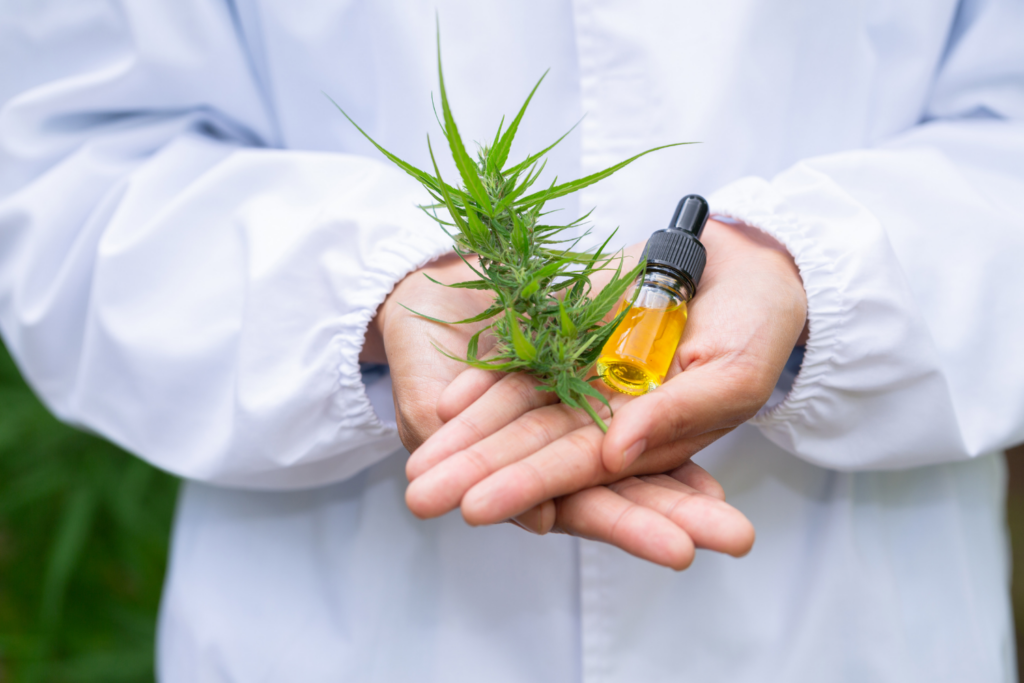
Conclusion: Where to Buy CBD in Cincinnati
The CBD market in Cincinnati is abundant: you can find many online and retail stores.
Cannabidiol has been legal there since 2019, and marijuana has been decriminalized since that same year.
Also, remember that if you need medical cannabis, you can find the necessary steps on the MMCP website.
